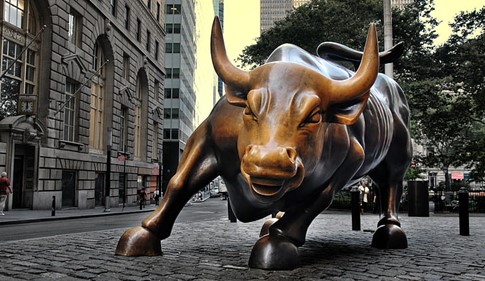Art as an asset class
In this article, Nakul PANJABI (ESSEC Business School, Grande Ecole Program – Master in Management, 2021-2024) talks about the Art as an asset class.
Before delving into the economics of the art market and art’s significance as an asset class, let us first recollect the definition of an asset and an asset class. An asset broadly refers to a resource from which future economic benefits are expected to flow. An asset class is a group of assets that have similar characteristics and related risk and return behavior. Common examples of asset class would be equities, fixed-income investments, and real estate.
Why have you not invested in art yet?
Although an age-old investment, art as an investment has been available to only a minority of investors most of whom are high-net-worth individuals (HNWI) or even ultra-high-net-worth individuals (UHNWI). The prime reason is that the market faces an inelastic supply. In simple terms, there are very few goods in market to be traded which leads to higher prices of each item and therefore, at equilibrium, only few people with such means could afford the good. This economic explanation of the art market would be enough if there were very few art items available to buy. However, as intuition might suggest, that is not the case. The world is filled with pieces of art and people who own it. Does this fact weaken our previous argument? The answer is simply No. Even though there are lots of art item and anyone with some spare money can buy a piece of art, almost none of those items would be classified as an asset. Art as an Asset class has an extremely limited supply. Only a few pieces of art are purchased as Asset.
Features of the Art Market
Besides limited supply and consequently higher prices, there are few other factors as well that makes art an interesting asset class. Firstly, the investable art items are highly illiquid. Selling a collectible art item is a time-consuming complex process. It requires dealers, auctions and most importantly potential buyers who could afford such an expensive item that provides no economic benefits except capital appreciation. As one might guess, there are only a handful of individuals in the world who own a 50-million-dollar painting.
Secondly, the supply of this asset class is not closely related to the cost of producing it. Most goods’ supply is based on the cost of producing them. For example, it is cheap to produce toothpaste, so it has an elastic supply. If there is a strike at a toothpaste factory, then there would be less people to make the toothpaste. This will increase the wages (cost of production) paid to them. Now fewer toothpastes would be produced at a higher price. This will make the supply of toothpaste relatively inelastic. However, this economic phenomenon seems to be missing in the art market. The supply of this asset class is highly inelastic but the goods that represent investable art are very cheap to produce. The low cost of production does not dictate the supply of collectible art. It is the rarity of these goods that cause such an inelastic supply. A lot of Investable art items are works of deceased artists. Although they probably were very cheap to produce, it is impossible to create more of them. The rarity of such items makes them so valuable.
Art has a very high maintenance cost and most of the art do not provide any recurring cashflows. One source of art cashflows is the income generated from renting art to museums. Because there is a limit to the number of paintings that can be displayed in museums, most of the return from art investments is generated through capital appreciation. However, as we discussed before, it is not so easy to sell a piece of art. Then, why would anyone, let alone the most sophisticated of investors, buy such an asset? Well, there are a lot of reason why one might invest in art.
Reasons to invest in the art market
Low correlation
Art has a low correlation with traditional asset class. Fluctuations in Apple’s stock price would probably have little effect on the price of an authentic Picasso painting. Thanks to this low correlation, a collectible painting can act as a hedge against inflation and market crashes. According to a 2022 Citibank report, art has either a weak positive correlation or zero correlation with other asset classes.
Tax Benefits
Given the fact that the value of investable art does not derive from either its future cashflows or its cost of production, it is relatively easier to manipulate its price than it is for other assets. Manipulating the price of an asset is extremely useful to manipulate income and consequently taxes.
Money laundering
Art Investments have also been used for money laundering. The logic is straightforward. A 50-million-dollar painting can be much easily hidden than cash or gold of similar value.
Status Symbol
Art is a very efficient status symbol. The rarity of the collectible art items makes owning them a source of prestige. If your friend owns one of the only five paintings created by a famous renaissance painter, you don’t need to be an expert in art to judge the economic worth of the painting or of your friend.
What Future looks like for the art market
According to the annual report by Art Basel and UBS Global Art, the worldwide art sales crossed $65.1 billion in 2021. This reflects a 29% increase from the previous year.
Moreover, with increase in the trend of NFT trading, millennials are more interested in (digital) art than ever. According to 2021 study by Art Basel and UBS Global Art, millennials were the highest spenders on fine art in 2020.
Now, with an increase in art investing funds, the barriers for art investing have also been reduced tremendously. People, who could not invest in art because of high capital requirement and lack of expertise, can now do so by investing in an art fund.
Why should I be interested in this post?
As an (wealthy) investor, art represents an asset class which is not highly correlated with traditional assets. It then can be useful for asset allocation in terms of diversification. When you think of your personal portfolio, you may think of art.
Related posts on the SimTrade blog
▶ Youssef LOURAOUI Portfolio
▶ Hélène VAGUET-AUBERT Private banking: evolving in a challenging environment
▶ Nakul PANJABI Charging Bull on Wall Street
About the author
The article was written in November 2022 by Nakul PANJABI (ESSEC Business School, Grande Ecole Program – Master in Management, 2021-2024).


